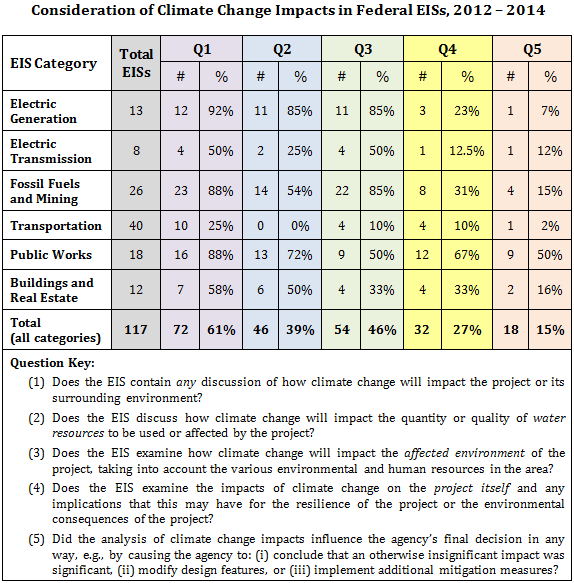by Kennan Zhong
Legal Intern, Center for Climate Change Law
On June 6, 2011, the Environmental Protection Agency (EPA) issued its latest comments and rating on the State Department’s Supplemental Draft Environmental Impact Statement (SDEIS) for the Keystone XL project, a major new oil pipeline being developed by Transcanada, a Canadian firm, that would, if approved, bring huge volumes of Canadian heavy crude across the Great Plains to refineries in Oklahoma and Texas. It is this approval which triggers the Environmental Impact Statement (EIS) requirement under the National Environmental Policy Act (NEPA). In its comments, the EPA gave the project a rating of “Environmental Objections – Insufficient Information (EO-2).” Because the proposed pipeline will cross the U.S.-Canadian border, the State Department has primary jurisdiction over the project and must give its approval.
Environmental concerns have temporarily halted progress on the Keystone XL project. Advocacy groups have raised concerns that the pipeline could increase U.S. dependence on nonrenewable fossil fuels. Moreover, the extraction of oil sands is extremely destructive to the environment, and the process of refining oil sands into usable oil produces significantly more greenhouse gas emissions compared to conventional oil.[1] There are also significant concerns over the pipeline’s proposed route, which would run through the Ogallala Aquifer. The aquifer provides water for over two million Americans and serves as a vital source for much of the Midwest’s agricultural irrigation.[2] A pipeline leak could potentially contaminate the aquifer. Due to the viscosity of the bitumen from oil sands, diluents have to be added to the pipelines and they have to be pumped at higher pressure than conventional oil pipelines, increasing the risk and potential harm of leaks. Notably, the current section of the Keystone pipeline was shut down temporarily after two leaks were discovered in May 2011.[3]
The State Department’s initial Draft Environmental Impact Statement (DEIS) received a rating of “Inadequate-3” by the EPA (the lowest rating possible) on July 16, 2010. The EPA’s recent rating of “Insufficient Information” for the SDEIS is an upgrade over the agency’s rating for last year’s DEIS, but the EPA still noted several flaws in the most recent environmental assessment, including the lack of adequate analysis of oil spill risks and alternative pipeline routes, potential impacts to communities along the route, potential impacts to wetlands and migratory bird populations, lifecycle greenhouse gas emissions, and alternatives to mitigate the aforementioned impacts.[4]
The EPA comments specifically note that the SDEIS fails to disclose or analyze the potential diluents that would have to be used to reduce the viscosity of the bitumen carried in the Keystone XL pipeline.[5] Analysis of the diluents can be important to the development of proper response strategies in case of a leak in the pipeline. The EPA comments also state that the SDEIS fails to adequately consider alternate routes that do not run through the Ogallala aquifer. Due to the shallow water table depths and the high permeability of the soils directly above the aquifer, there is heightened risk for contamination if a spill did occur.[6] The EPA comments note that the SDEIS’s failure to provide a detailed evaluation of environmental impacts of alternative routes “does not fully meet the objectives of NEPA and CEQ’s NEPA regulations.”[7]
Notably, EPA points out that the SDEIS also fails to adequately analyze lifecycle greenhouse gas (GHG) emissions. As noted above, the extraction and refinement of oil sands are more GHG-intensive compared to conventional oil. The SDEIS estimates that the additional annual GHG emissions from the proposed pipeline could range from an additional “12-23 million metric tons of CO2 equivalent… (roughly the equivalent of annual emissions from 2 to 4 coal-fired power plants)” over conventional crude oil from the Middle East. [8] The EPA however, believes that the methodology used by the State Department is inaccurate and could underestimate GHG emissions by as much as 20 percent.[9] Given that the expected lifetime of the Keystone XL pipeline is fifty years, the EPA notes that the project could yield an extra 1.15 billion tons of GHGs using the quantitative estimates in the SDEIS.[10]
Furthermore, the SDEIS only compares the emission of the project with global GHG emissions, and thereby concludes that global emissions levels will be largely unaffected by the project. The EPA recommends against comparing GHG emissions from a single project to global emissions, and that the State Department instead consider the indirect impacts, or social costs, of GHG emissions in its Final EIS. These social costs, known as the “Social Cost of Carbon,” can include “climate damages due to changes in net agricultural productivity, human health, property damages from flood risk, and ecosystem services due to climate change.”[11] The EPA also notes that the SDEIS still does not adequately address opportunities to mitigate GHS emissions, and recommends that the final EIS include analysis of mitigation measures for both the construction of the Keystone XL project and overall emissions from oil sands production.
An energy analyst for Deutsche Bank notes that “each of these requests alone appears reasonable, but together, they seem to us to create a nearly impossible-to-achieve assessment that could indefinitely tie-up the State Department, either directly in responding to the requests or indirectly by establishing a basis for a lawsuit.”[12] Undeterred by the latest setbacks, Transcanada’s CEO has indicated that the oil sands development will continue regardless of the ultimate fate of the Keystone XL pipeline, mentioning China and other countries across the Pacific as alternate markets.[13]
The full EPA comments for the Keystone XL SDEIS (June 06, 2011) are available at: https://www.epa.gov/compliance/nepa/keystone-xl-project-epa-comment-letter-20110125.pdf
The full EPA comments for the Keystone XL DEIS (July 16, 2010) is available at: https://yosemite.epa.gov/oeca/webeis.nsf/(PDFView)/20100126/$file/20100126.PDF?OpenElement
[2] Id.
[4] Id. at 2
[5] Id. at 3
[6] Id.
[7] Id. at 4
[8] Id. at 6
[9] Id.
[10] Id.
[11] Id.
[12] https://communities.canada.com/calgaryherald/blogs/pipeline/archive/2011/06/10/epa-puts-keystone-xl-timeline-in-doubt-analyst.aspx
[13] Ian Austin, “Oil Sands Project in Canada Will Go On if Pipeline Is Blocked,” NY Times, June 06, 2011, available at https://www.nytimes.com/2011/06/07/business/energy-environment/07pipeline.html?scp=2&sq=keystone%20xl&st=cse
Associate Director and Fellow, Center for Climate Change Law



